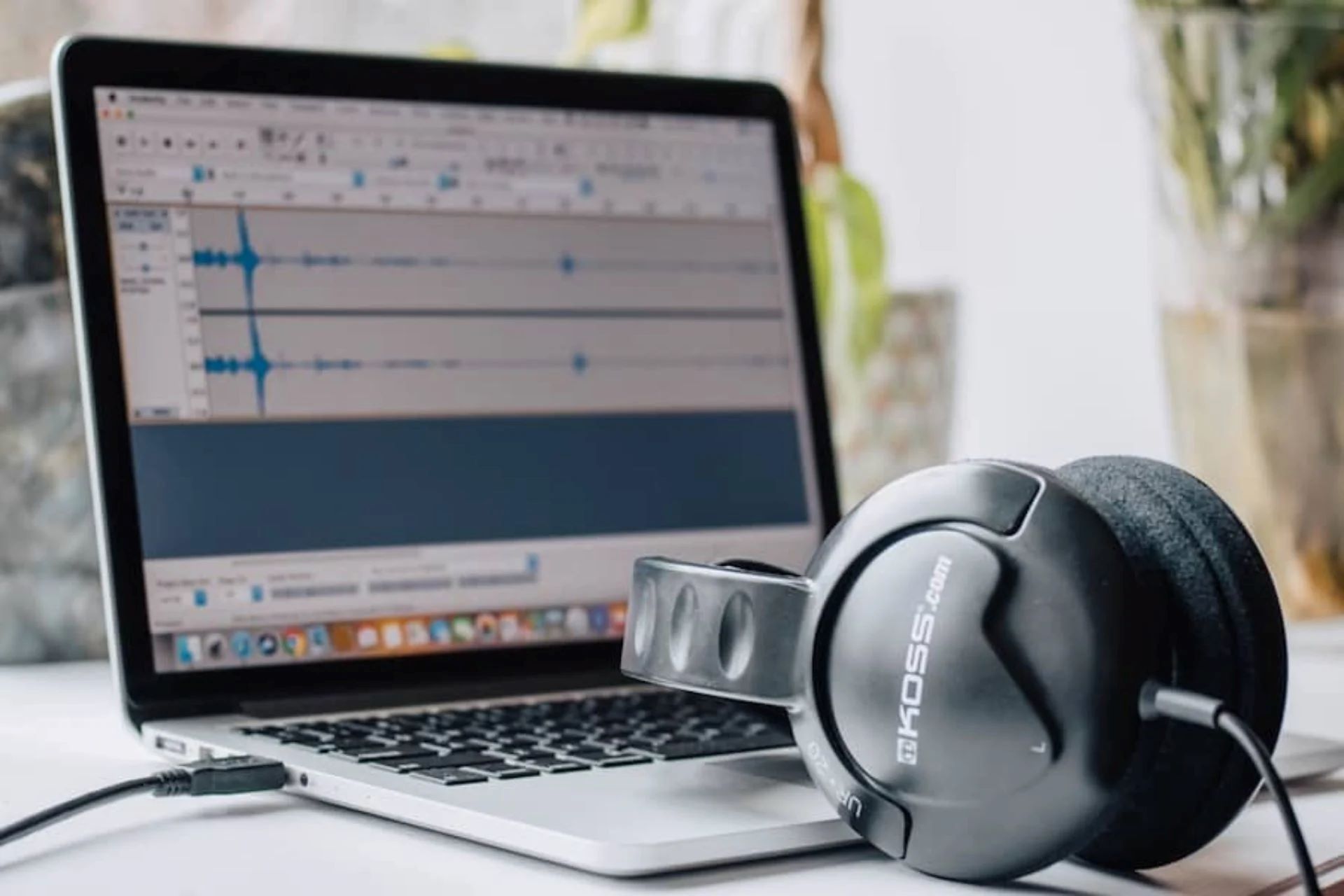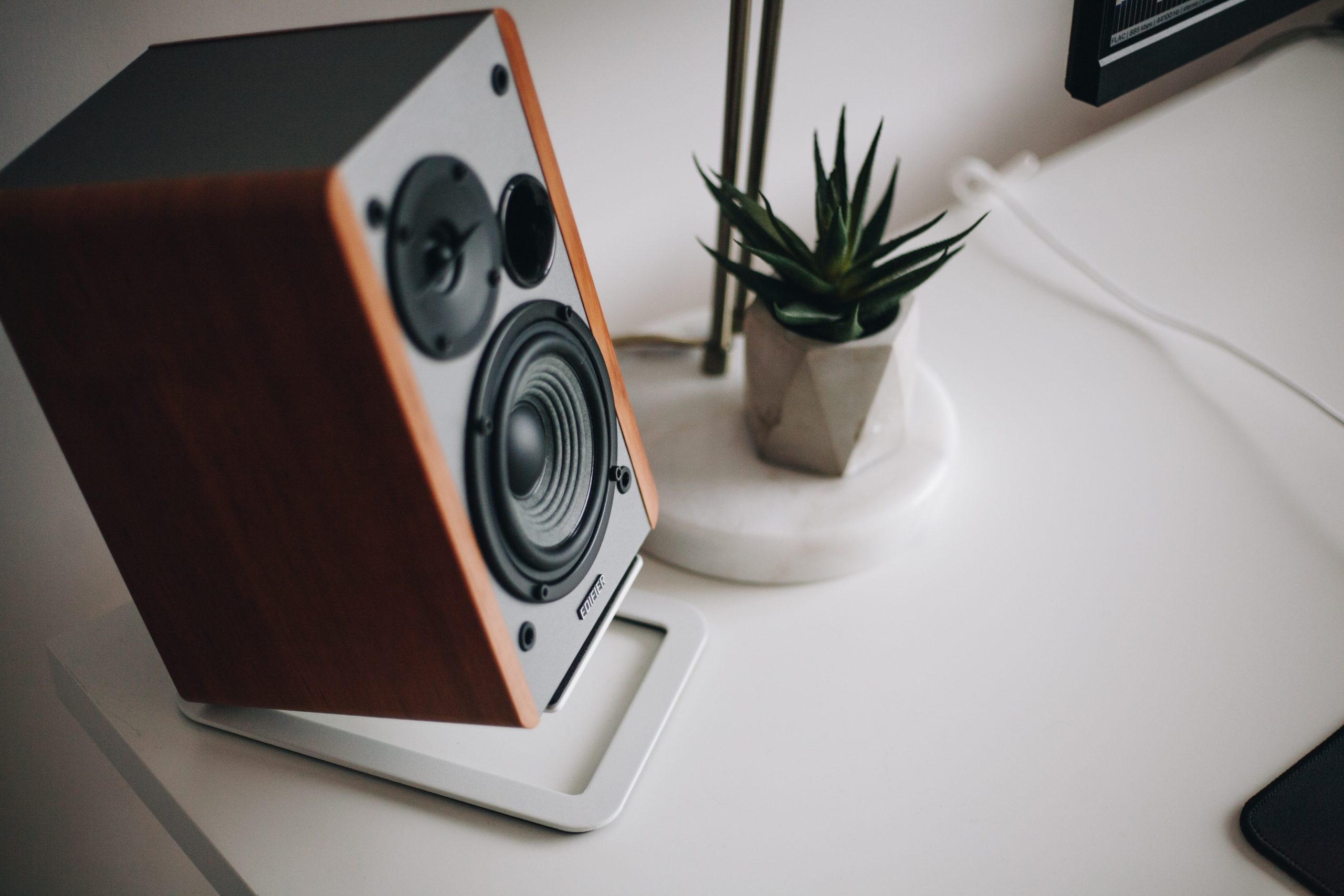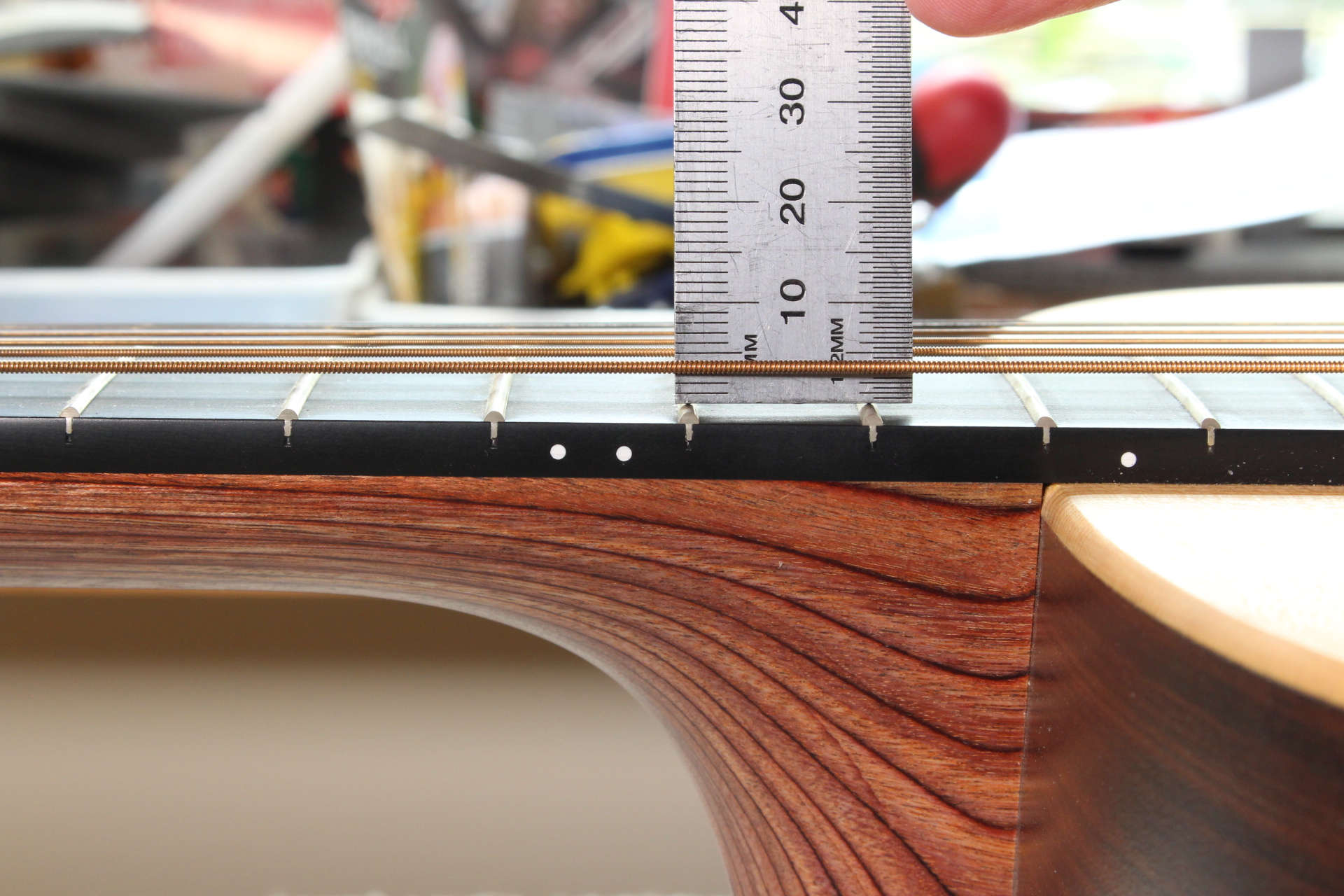Home>Devices & Equipment>Earbuds>How Should Earbuds Fit


Earbuds
How Should Earbuds Fit
Published: December 20, 2023
Discover the perfect fit for your earbuds and enhance your listening experience. Find out how earbuds should fit to ensure maximum comfort and superior sound quality.
(Many of the links in this article redirect to a specific reviewed product. Your purchase of these products through affiliate links helps to generate commission for AudioLover.com, at no extra cost. Learn more)
Table of Contents
Introduction
Welcome to the world of earbuds, the compact and convenient audio companions that have revolutionized the way we listen to music, podcasts, and more. Whether you’re a music enthusiast who enjoys immersive sound or someone who relies on earbuds for hands-free communication, finding the right fit is crucial for an optimal audio experience.
Earbud fit goes far beyond mere comfort; it directly impacts both the quality of sound and the ability to block external noise. In fact, selecting the right earbud size and style can make a world of difference in how you enjoy your favorite audio content.
In this article, we’ll explore the importance of proper earbud fit and the various factors to consider when finding the right fit. We’ll also provide some tips and common mistakes to avoid, as well as highlight the potential risks of an incorrect fit. So, let’s dive in and discover how to find the perfect earbud fit that will enhance your listening experience.
Importance of Proper Earbud Fit
When it comes to earbuds, achieving a proper fit is more than just a matter of comfort – it significantly affects the overall audio experience. It can be tempting to simply pick the first pair of earbuds that catch your eye, but taking the time to find the right fit is crucial for several reasons.
First and foremost, a proper earbud fit ensures optimal sound quality. When the earbuds fit snugly and securely in your ears, they create a seal that helps to block out external noise. This allows you to fully immerse yourself in the audio without any distractions, resulting in a more enjoyable listening experience. Without a proper fit, you may find yourself constantly adjusting the earbuds or struggling to hear the finer details of your favorite songs or podcasts.
In addition to sound quality, a well-fitting pair of earbuds also provides better comfort during extended use. Nobody wants to experience discomfort or even pain after wearing earbuds for extended periods. When the earbuds fit properly, they distribute pressure evenly, reducing the risk of soreness or irritation.
Another important aspect of a proper earbud fit is its impact on noise isolation. The seal created by well-fitting earbuds not only blocks out external noise but also prevents the audio from leaking out. This means you can enjoy your favorite tunes without disturbing those around you, whether you’re on a crowded bus or in a quiet office space.
Lastly, a proper fit can contribute to the longevity of your earbuds. When the earbuds fit securely in your ears, there is less chance of them getting yanked out accidentally. This reduces the risk of damage and extends the lifespan of your beloved earbuds.
Overall, achieving a proper earbud fit is crucial for experiencing the full potential of your audio devices. From improved sound quality and comfort to noise isolation and durability, the benefits of a proper fit are numerous. Now that we understand the importance of proper earbud fit, let’s explore the factors to consider when finding the right fit.
Factors to Consider for a Proper Fit
When it comes to finding the right fit for your earbuds, there are several factors to consider. Each person’s ears are unique, so it’s important to take the time to understand these factors and find the best fit for your specific needs. Here are some key factors to keep in mind:
- Earbud Size: Earbuds typically come with different sizes of ear tips or sleeves to accommodate various ear canal sizes. It’s essential to choose the size that fits snugly in your ears without causing discomfort or falling out. Experiment with different sizes to find the best fit for your ears.
- Earbud Style: There are different earbud styles available, such as in-ear, on-ear, or over-ear. In-ear earbuds fit directly into the ear canal, providing a secure and immersive fit. On-ear and over-ear earbuds rest on the outer part of the ear and offer varying levels of comfort and stability. Consider your preferences and needs when choosing the style that suits you best.
- Ear Canal Shape: Everyone’s ear canal shape is unique, so it’s important to consider this when selecting earbuds. Some people have narrow ear canals, while others have wider ones. Find earbuds that match the shape of your ear canals for a comfortable and secure fit.
- Earbud Material: The material of the ear tips can also affect the fit and comfort. Silicone and foam tips are commonly used and provide different levels of flexibility and noise isolation. Experiment with different materials to find the one that works best for you.
- Adjustability: Some earbuds come with adjustable features to ensure a personalized fit. This may include adjustable ear hooks, detachable cables, or customizable ear tips. Consider these features if you prefer the ability to fine-tune the fit of your earbuds.
- Activity Level: Your intended use of the earbuds can impact the type of fit you need. If you plan to use them during physical activities, such as running or working out, you may need earbuds with a secure fit to prevent them from falling out. For less active use, a more relaxed fit may be suitable.
By considering these factors, you can narrow down your options and find earbuds that are tailored to your unique needs and preferences. However, it’s important to keep in mind that even with these factors in mind, finding the perfect fit may require some trial and error. So, be patient and willing to experiment until you find the best fit for your ears.
Tips for Finding the Right Fit
Now that we have explored the factors to consider for a proper earbud fit, let’s dive into some practical tips to help you find the right fit for your ears:
- Try Different Sizes: If your earbuds come with multiple sizes of ear tips or sleeves, start by trying out different sizes to see which one provides the best fit. Remember, the right size should create a snug seal without causing discomfort.
- Experiment with Earbud Styles: If you’re not satisfied with the fit of in-ear earbuds, try exploring different styles such as on-ear or over-ear options. These styles may offer a more comfortable fit for some individuals.
- Insert the Earbuds Properly: When inserting in-ear earbuds, make sure to insert them snugly into your ear canal. The earbuds should feel secure and create a seal that blocks external noise. Experiment with different angles and depths of insertion to find the most comfortable and effective fit.
- Consider Customizable Options: If you’re struggling to find the right fit with traditional earbuds, consider investing in custom-fit earbuds. These earbuds are molded specifically to fit the shape of your ears, offering the ultimate in comfort and personalized fit.
- Use Adjustable Features: Take advantage of any adjustable features your earbuds offer. Adjusting ear hooks, cables, or ear tips can help you achieve a better fit and prevent the earbuds from falling out during activities.
- Consult with an Expert: If you’re still having difficulty finding the right fit, consider consulting with an audio specialist or audiologist. They can provide expert advice and recommendations based on your unique ear characteristics.
Remember, finding the right fit may require some trial and error. Don’t be discouraged if you don’t find the perfect fit right away. It’s worth the effort to take the time and find earbuds that provide optimal comfort and sound quality.
Now that we have covered some tips to help you find the right fit, let’s explore some common mistakes to avoid when it comes to earbud fit.
Common Mistakes to Avoid
While finding the right fit for your earbuds may seem straightforward, there are some common mistakes that people often make. By avoiding these mistakes, you can ensure a better fit and improve your overall audio experience. Here are some mistakes to watch out for:
- Settling for the Wrong Size: One of the biggest mistakes is using ear tips that are either too big or too small for your ears. Using the wrong size can cause discomfort, affect sound quality, and even lead to the earbuds falling out. Take the time to find the right size that creates a secure and comfortable fit.
- Not Inserting Properly: Improper insertion of in-ear earbuds is a common mistake. If you fail to insert them snugly into your ear canal, you may experience a loose fit, subpar sound quality, and compromised noise isolation. Make sure to insert them properly for the best results.
- Missing the Seal: Creating a proper seal is essential for optimal sound quality and noise isolation. If there is no seal, external noise can leak in, and the bass response may be affected. Ensure that your earbuds create a tight seal by adjusting the fit or trying different ear tips.
- Ignoring Adjustable Features: Many earbuds come with adjustable features such as ear hooks or customizable ear tips. Ignoring or neglecting these features can lead to an improper fit. Be sure to utilize these adjustable components to enhance comfort and stability.
- Using Dirty Ear Tips: Over time, ear tips can accumulate dirt, sweat, and oils, affecting both fit and hygiene. It’s important to regularly clean and replace your ear tips to maintain a proper fit and prevent the build-up of bacteria.
By avoiding these common mistakes, you can optimize the fit and performance of your earbuds. Now, let’s explore the potential risks of an incorrect fit.
Potential Risks of Incorrect Fit
While it may be tempting to overlook the importance of a proper earbud fit, using earbuds with an incorrect fit can lead to various risks and consequences. It’s essential to be aware of these potential risks to ensure your ear health and overall well-being. Here are some potential risks of using earbuds with an incorrect fit:
- Poor Sound Quality: When earbuds don’t fit properly, the sound quality can be compromised. You may experience a lack of bass response, muffled audio, or an overall subpar listening experience. A proper fit creates optimal sound isolation, allowing you to fully enjoy the nuances of your audio content.
- Discomfort and Pain: Using earbuds that don’t fit well can cause discomfort and pain, particularly during extended use. Pressure points, soreness, and irritation can occur when the earbuds don’t distribute pressure evenly or fit too tightly. This can lead to discomfort and may discourage you from using earbuds altogether.
- Increased Risk of Ear Infections: Inadequate fit can disrupt the natural airflow in the ear canal, creating a warm and moist environment that promotes bacteria growth. This increases the risk of developing ear infections, such as swimmer’s ear or external otitis. Keeping your earbuds clean and ensuring a proper fit can help minimize this risk.
- Hearing Damage: Using earbuds with an improper fit may lead you to increase the volume to compensate for external noise or poor sound quality. Prolonged exposure to high volume levels can cause hearing damage or even permanent hearing loss. With a proper fit, you can enjoy your audio content at lower volumes while still maintaining excellent sound quality.
- Risk of Earbud Dislodgement: When earbuds don’t fit securely, there is a higher likelihood of them falling out or becoming dislodged during physical activities. This can be frustrating and may interrupt your listening experience or even damage the earbuds. A proper fit ensures stability and helps prevent accidental dislodgement.
Considering these potential risks, it becomes clear how important it is to achieve a proper earbud fit. By prioritizing the fit and taking the necessary steps to find the right earbuds for your ears, you can minimize these risks and enjoy a comfortable and safe audio experience.
Now that we have explored the potential risks of an incorrect fit, let’s wrap up the article and summarize the key points we’ve discussed.
Conclusion
Having the right fit for your earbuds is crucial for an optimal audio experience. From sound quality and comfort to noise isolation and overall ear health, the benefits of a proper fit are evident. By considering factors such as earbud size, style, and adjustability, you can find earbuds that cater to your unique needs and preferences.
When searching for the right fit, remember to try different sizes and styles, experimenting until you find what works best for you. Taking advantage of adjustable features and considering the activity level at which you’ll be using the earbuds can also contribute to a more tailored fit.
Avoiding common mistakes such as settling for the wrong size, improper insertion, and ignoring adjustable features is essential. These mistakes can compromise sound quality, comfort, and overall performance. Be proactive in cleaning and replacing ear tips to maintain hygiene and prevent ear infections.
Understanding the potential risks of an incorrect fit, such as poor sound quality, discomfort, and increased risk of ear infections, emphasizes the importance of finding the right fit for your earbuds. By doing so, you can enhance your listening experience while safeguarding your ear health.
In conclusion, investing time and effort into finding the perfect fit for your earbuds is well worth it. Take advantage of the tips and information provided in this article to ensure a comfortable, enjoyable, and safe audio experience. So go ahead, find that perfect fit, and immerse yourself in the world of quality sound.











